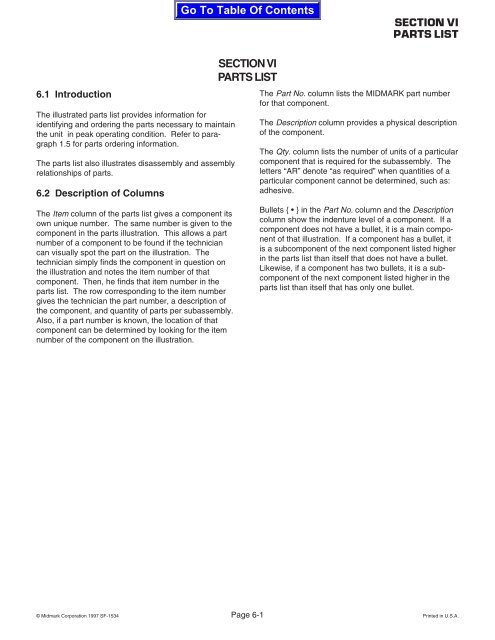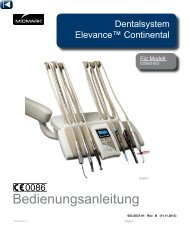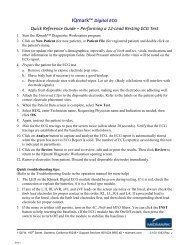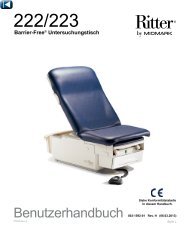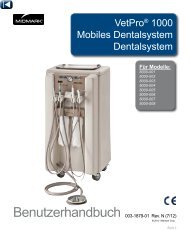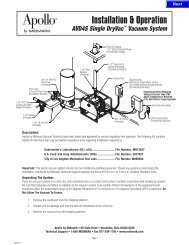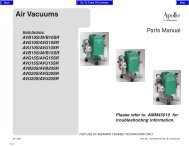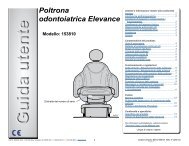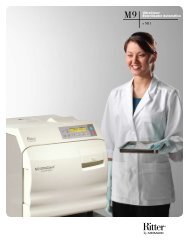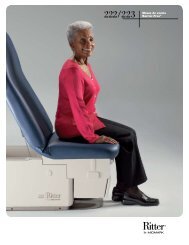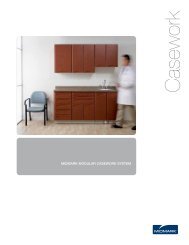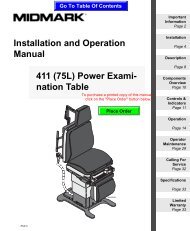100 (all) - Midmark
100 (all) - Midmark
100 (all) - Midmark
You also want an ePaper? Increase the reach of your titles
YUMPU automatically turns print PDFs into web optimized ePapers that Google loves.
6.1 Introduction<br />
The illustrated parts list provides information for<br />
identifying and ordering the parts necessary to maintain<br />
the unit in peak operating condition. Refer to paragraph<br />
1.5 for parts ordering information.<br />
The parts list also illustrates disassembly and assembly<br />
relationships of parts.<br />
6.2 Description of Columns<br />
The Item column of the parts list gives a component its<br />
own unique number. The same number is given to the<br />
component in the parts illustration. This <strong>all</strong>ows a part<br />
number of a component to be found if the technician<br />
can visu<strong>all</strong>y spot the part on the illustration. The<br />
technician simply finds the component in question on<br />
the illustration and notes the item number of that<br />
component. Then, he finds that item number in the<br />
parts list. The row corresponding to the item number<br />
gives the technician the part number, a description of<br />
the component, and quantity of parts per subassembly.<br />
Also, if a part number is known, the location of that<br />
component can be determined by looking for the item<br />
number of the component on the illustration.<br />
SECTION VI<br />
PARTS LIST<br />
SECTION VI<br />
PARTS LIST<br />
The Part No. column lists the MIDMARK part number<br />
for that component.<br />
The Description column provides a physical description<br />
of the component.<br />
The Qty. column lists the number of units of a particular<br />
component that is required for the subassembly. The<br />
letters “AR” denote “as required” when quantities of a<br />
particular component cannot be determined, such as:<br />
adhesive.<br />
Bullets { • } in the Part No. column and the Description<br />
column show the indenture level of a component. If a<br />
component does not have a bullet, it is a main component<br />
of that illustration. If a component has a bullet, it<br />
is a subcomponent of the next component listed higher<br />
in the parts list than itself that does not have a bullet.<br />
Likewise, if a component has two bullets, it is a subcomponent<br />
of the next component listed higher in the<br />
parts list than itself that has only one bullet.<br />
© <strong>Midmark</strong> Corporation 1997 SF-1534 Page 6-1 Printed in U.S.A.


